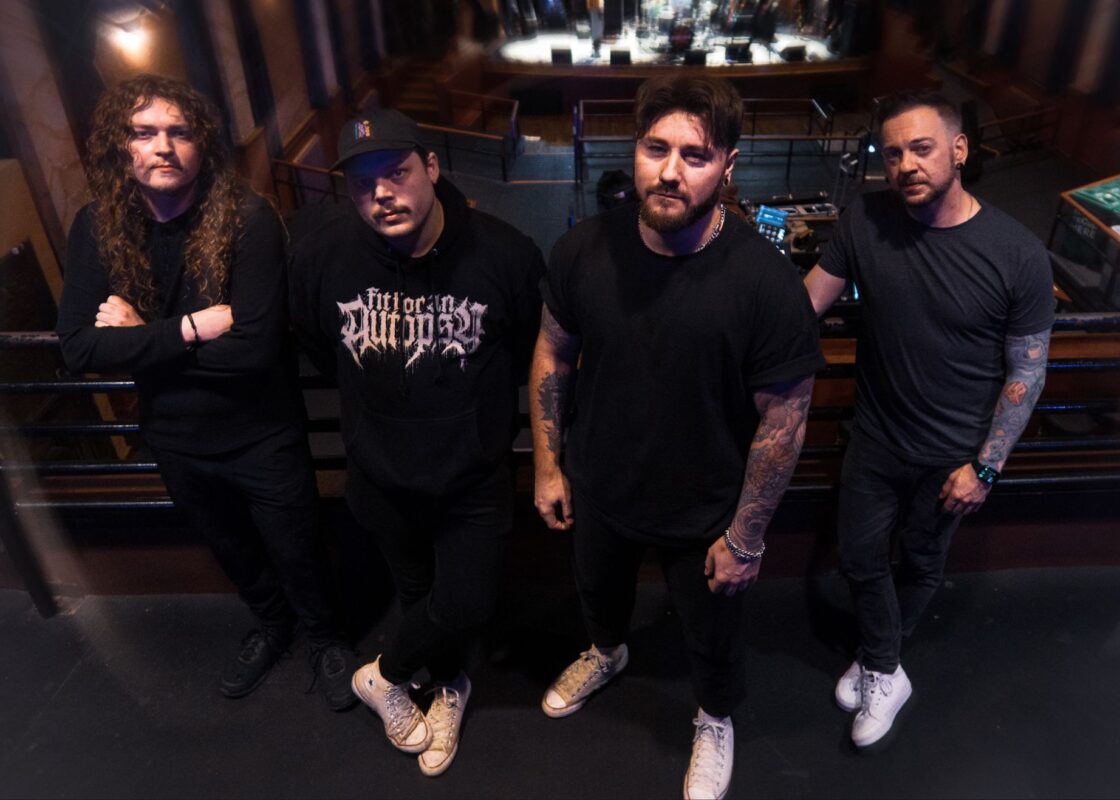You felt it if you were in the crowd at Chula Vista’s North Island Credit Union Amphitheater that night. It was a rare sense that it wasn’t you going to see some of the greatest bands in modern music history but that they were coming to see you.
The Night Running Tour lineup reads like surprise gift: Starcrawler, Spoon, Cage the Elephant, and Beck, and it was the connection each group built with the audience that elevated the experience from a typical night out to unforgettable. Before the night’s co-headliners – Cage the Elephant and Beck – took the stage for their respective sets, fans already got their money’s worth in incredible rock. Starcrawler kicked things off with their patented high-voltage stage presence. Frontwoman Arrow de Wilde’s delicate, angular frame perfectly juxtaposed her group’s aggressive reincarnation of ’70s punk rock. They were the perfect openers for a theatrical night.
Following, ’90s rock veterans Spoon carried the crowd through a nine-song sunset set with a performance that underpinned their status as one of the most indelible sounds in indie rock. True to the band’s persona, Spoon was consistent and collected with a polished coolness that only comes from 26 years of musical authority.
Cage the Elephant
Any empty seats were filled in the intermission in anticipation of the first of the night’s headliners, Cage the Elephant. Age apparently had no place in the seats, with Gen Zers milling among millennials, cheersing beers with baby boomers. To the roar of the audience and rhythm of “Cry Baby,” Matt Shultz took the stage in a hodgepodge of bizarre attire: a transparent plastic coat atop an emerald suit and three layers of face masks, barely any of which he’d still be wearing by the end of Cage’s 20-song set.
The performer, the crowd-pleaser, the attention-grabber but also undeniably the attention-giver, Shultz made sure he ignored no one in the audience. He spent half of the second song, “Broken Boy,” ensconced in the enthusiastic embrace of front-row fans. At one point during “Mess Around,” he dashed to the side stage, handing the mic to a backstage pass holder who was visibly awestruck, flattered, and probably a little tempted to belt a lyric or at least a woohoo.
“Thank you for opening your hearts and your minds,” Shultz said in one of the many times he addressed the crowd. Later, in a moment of surprising and sincere vulnerability, he dropped to his knees at the edge of the stage, emphatic that we press on. “Don’t give up. Don’t give up. Don’t give up,” he pleaded. On hope, on the good, on love… Then, as powerfully as he drew us in, he blew us away with the beautifully absurd “Skin and Bones.”
Like so many of rock’s greatest, Cage The Elephant are gifted and natural performers. But, unlike so many, their stage presence is anything but practiced. Shultz seemed especially curious about his world, approaching his part of the act in a way that was as improvised as it was exploratory. I don’t really believe even he knew what he was going to do. “You all think I’m crazy, don’t you?” Shultz conceded at one point, slouching onto the ground. It was rhetorical, but it underscored the band’s authenticity in a musical environment seemingly overrun with over-choreographed gimmicks.
Beck
If Cage the Elephant’s setlist sounded like a greatest hits album, Beck’s set – despite being five songs shorter – was a tour of musical mastery. Center stage, surrounded by cinema-worthy set design and visuals reflective of his somewhat nebulous style, Beck opened with a distinctive slide guitar that morphed harmoniously into the intro of “Loser.” Starting his performance with the song that started his career helped carry over the crowd’s high-energy from the previous three acts.
He followed with a momentous “E-Pro” fuelled by more distortion and rock than the album cut. From there, the hits kept hitting with an eclectic offering derived from six standout albums. In an effortless balance of groove and gonzo, Beck gave us a full spread of his genre-busting discography. Strengthening the connection between audience and artists, he happily drew out our favorite choruses so we could all sing along a little longer.
But it wasn’t all about the music; his performance was a lesson in lighting and visuals. This was perhaps most highlighted during “Wow” with its stencil-and-collage psychedelia that perfectly embodied the experimental nature of the Beck ethos.
Ultimately, the alt-rock elder’s focus was outward-facing. Early in his act, he evoked a round of applause for Starcrawler and Spoon, claiming the latter as one of the best rock bands of our generation. And on more than one occasion he reminded the audience that we had likewise just witnessed the best frontman of our generation in Matt Shultz. Exactly who’s generation he was talking about is up to interpretation.
But backing up his claim, Beck brought Schultz on stage for a dance-adelic encore with “Where It’s At” and the tour’s namesake single, the reggae-infused collab “Night Running.” By the end of the concert, we had shaken and rattled our bodies through four epic performances, leaving everyone with two feelings: happy exhaustion and total connection.





















































